Welcome to our free classical music site

Do you write about classical music? Are you a blogger? Want to team up with Classical Connect? Send us a message, let's talk!

Do you write about classical music? Are you a blogger? Want to team up with Classical Connect? Send us a message, let's talk!
March 31, 2014. Haydn and Rachmaninov. The great Austrian composer Franz Joseph Haydn was born on this day in 1732. All musicians of the time needed patrons, and the main ones in Haydn’s life, princes Paul Anton and Nikolaus Esterházy, were exceptional. The Esterházys were an old Hungarian noble family who, through their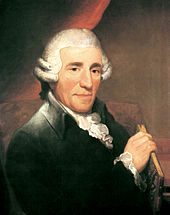 loyal service to the Habsburg emperors and opportune marriages, acquired land and wealth comparable to that of their sovereigns. They had several residences; the main was Schloss Esterházy in Eisenstadt, Austria, and that’s were Haydn spent the first years of his employ. One of the palace’s rooms served as a concert hall. Today it’s called Haydnsaal and is considered acoustically one of the finest concert halls in the world. The second residence, the magnificent Esterháza, was founded by Prince Nikolaus in 1762 and not completed till 1784. It cost 13 million gulden to construct (to compare, Haydn’s initial annual salary was 400 gulden). The palace had 124 rooms and two theaters, one for the opera (it was inaugurated with the performance of Haydn’s opera Lo Speciale) and one used as a marionettes theater. The Esterházys usually stayed there during the summers and from 1766 to 1790 Haydn had a separate four-room apartment in the servant’s quarters of the palace.
loyal service to the Habsburg emperors and opportune marriages, acquired land and wealth comparable to that of their sovereigns. They had several residences; the main was Schloss Esterházy in Eisenstadt, Austria, and that’s were Haydn spent the first years of his employ. One of the palace’s rooms served as a concert hall. Today it’s called Haydnsaal and is considered acoustically one of the finest concert halls in the world. The second residence, the magnificent Esterháza, was founded by Prince Nikolaus in 1762 and not completed till 1784. It cost 13 million gulden to construct (to compare, Haydn’s initial annual salary was 400 gulden). The palace had 124 rooms and two theaters, one for the opera (it was inaugurated with the performance of Haydn’s opera Lo Speciale) and one used as a marionettes theater. The Esterházys usually stayed there during the summers and from 1766 to 1790 Haydn had a separate four-room apartment in the servant’s quarters of the palace.
Haydn was hired by Prince Paul Anton in 1761 as a Vice-Kapellmeister: formally the title of Kapellmeister belonged to Gregor Werner, a minor composer, but from the start Haydn took over most of his duties. The prince was an amateur musician (as well as a Field Marshal); after appointing Haydn he went on to hire a number of virtuoso musicians. That greatly improved the quality of his private orchestra, which Haydn much appreciated. Paul Anton died one year later, just 51 years old, and his younger brother Nikolaus, who inherited the title of the prince, became the head of the family. Like Paul Anton, Nikolaus was very musical: he played cello, viola da gamba, and baryton, a large string instrument somewhat resembling bass viola, which could be played with a bow or plucked. It practically disappeared since the end of the 18th century, but Haydn wrote a large number of pieces for baryton to entertain Nikolaus, especially after a reprimand from the prince who commanded him to write more music for this instrument (many baryton trios survive but are rarely played today). Nikolaus valued Haydn very highly: after Werner’s death in 1766 he promoted him to full Kapellmeister, paid him well, and kept Luigia Polzelli, a second-rate soprano, on the payroll after learning that she is Haydn’s mistress.
From 1762 to 1790, the year of Nikolaus’s death, Haydn wrote a large number of string quartet and more than 60 symphonies. His orchestra was small, but the musicians were good (the prince paid well). Importantly, it was fully at Haydn’s disposal, so he could rehears and experiment at will. One of the symphonies, no. 45, became known as "Farewell." It was composed during the long summer residence at the Esterháza in 1772. Musician’s families stayed back in Eisenstadt, so musicians were getting lonely and wanted to go home. Haydn was famous for his sense of humor which he could express in musical terms, and in his new symphony he made a veiled suggestion that it’s time for them to go. Here's how it was done: in the last part of the final movement, Adagio, musicians in different sections are given a little solo to play. When it’s over, they snuff out the candle illuminating the music stand, and leave the stage. Other musicians follow them. In the end, only two violin players remain on the dark stage (in the original performance one of them was Haydn himself). Apparently, Nikolaus got the hint: the very next day the court moved back to Schloss Esterházy. You can hear the Farewell symphony in the performance by the Academy of Ancient Music, Christopher Hogwood conducting.
Sergei Rachmaninov was born on 20th of March old style, or April 1st, new style, of 1873. We’ll commemorate his birthday next week. Permalink
Mach 24, 2014. Bartók and d’Indy. Béla Bartók, one of the greatest composers of the 20th century, was born on March 25th of 1881. Last year we celebrated him with one of his last compositions, the Concerto For Orchestra, which he wrote in the US in 1943 and revised the year of his death, 1945. The last years of Bartók’s life were difficult: his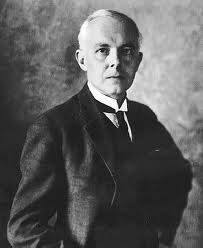 health was failing, he couldn’t adjust to the life in a foreign country, and his family was in financial dire straits. Today we’ll turn to a much brighter period in his life, from the late 1920s to the late ‘30s, when his art had reached its maturity and he produced a number of masterpieces. Much of Bartók’s music is intimately related to his activities as an ethnomusicologist. Together with Zoltan Kodály he collected a vast number of authentic folk melodies, not just Hungarian, but also Romanian, Slovakian, and Bulgarian. He even went to Algeria and Turkey to study the folk music of those countries. Bartók assimilated many of the tunes and tempos of old melodies into his own music, producing highly original and sophisticated pieces. During this period he wrote several String quartets, two Piano concertos, a composition for chorus and orchestra called Cantata Profana, a number of vocal, violin and orchestral pieces based directly on folk tunes, and one of his best-known compositions, Music for Strings, Percussion and Celesta. It’s scored for an unusual set of instruments: the percussions include a xylophone, different drums, and a tam-tam. There’s also a piano, which is used more or less as a percussion instrument. And of course, such a prominent use of celesta, which looks like an upright piano but produces the sound when the hammers strike pieces of metal, is a rarity (it’s probably best known from the Dance of the Sugar Plum Fairy in Tchaikovsky’s ballet The Nutcracker, and Mahler used it broadly in his symphony, no. 6). You can hear Music in the performance by the Philadelphia Orchestra. The conductor is a fellow Hungarian, Eugene Ormandy (Ormandy, famous for his long and productive tenure in Philadelphia, was born in Budapest in 1899 and moved to the US in 1931).
health was failing, he couldn’t adjust to the life in a foreign country, and his family was in financial dire straits. Today we’ll turn to a much brighter period in his life, from the late 1920s to the late ‘30s, when his art had reached its maturity and he produced a number of masterpieces. Much of Bartók’s music is intimately related to his activities as an ethnomusicologist. Together with Zoltan Kodály he collected a vast number of authentic folk melodies, not just Hungarian, but also Romanian, Slovakian, and Bulgarian. He even went to Algeria and Turkey to study the folk music of those countries. Bartók assimilated many of the tunes and tempos of old melodies into his own music, producing highly original and sophisticated pieces. During this period he wrote several String quartets, two Piano concertos, a composition for chorus and orchestra called Cantata Profana, a number of vocal, violin and orchestral pieces based directly on folk tunes, and one of his best-known compositions, Music for Strings, Percussion and Celesta. It’s scored for an unusual set of instruments: the percussions include a xylophone, different drums, and a tam-tam. There’s also a piano, which is used more or less as a percussion instrument. And of course, such a prominent use of celesta, which looks like an upright piano but produces the sound when the hammers strike pieces of metal, is a rarity (it’s probably best known from the Dance of the Sugar Plum Fairy in Tchaikovsky’s ballet The Nutcracker, and Mahler used it broadly in his symphony, no. 6). You can hear Music in the performance by the Philadelphia Orchestra. The conductor is a fellow Hungarian, Eugene Ormandy (Ormandy, famous for his long and productive tenure in Philadelphia, was born in Budapest in 1899 and moved to the US in 1931).
The French composer Vincent d'Indy was born in Paris on March 27, 1851. The d’Indys were an aristocratic family from Ardèche, and carried the title of counts. Vincent started piano lessons at an early age (his grandmother was his first teacher). Later he studied at the Paris Conservatory with Cesar Franck. He was critical of the teaching methods at the Conservatory, and in 1894 became one of the founders of a private music school called Schola Cantorum de Paris. The Schola became a very important French musical institution. Among his students there were Isaac Albéniz, Joseph Canteloube, Erik Satie, Arthur Honegger, Darius Milhaud and many other prominent musicians. Later in the 20th century Olivier Messiaen and Darius Milhaud taught at the school. Influenced by Wagner, Berlioz and his teacher, Franck, d’Indy was a very conservative composer. He lived to 1931, but none of developments in modern music, not even Impressionism, ever affected he work (he did conduct a number of works by Debussy, though). In addition to composing and teaching, d’Indy did much to revive some of the forgotten works of Palestrina, Monteverdi and the forgotten operas of Vivaldi. One of his more popular compositions is the poem Symphony on a French Mountain Air for piano and symphony orchestra. You can listen to it here, in the 1958 performance by the same Philadelphia orchestra under the baton of Eugene Ormandy. The piano soloist is Robert Casadesus, a major French pianist of the 20th century, and one of the greatest interpreters of the music of Ravel and Debussy.
PermalinkMarch 17, 2014. Bach. Johann Sebastian Bach was born on March 21th, 1685 (but see the note below) in Eisenach, a small town in what is now the central German state of Thuringia, but back then – the ducal seat of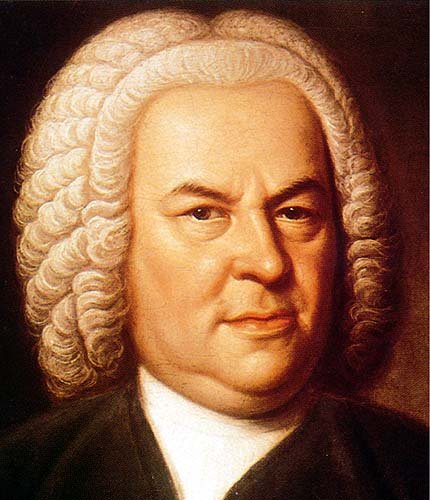 the house of Saxe-Eisenach. After working in Weimar for nine years and then serving at the court of Prince Leopold of Anhalt-Köthen for the following six (1717 through 1723), Bach received several prestigious positions in Leipzig. He was appointed the cantor of the Tomasschule, the school of the St. Thomas church, where he was to serve as the choir director. He was also made the music director of two other important churches in the city, St. Nicholas church (Nikolaikirche) and Paulinerkirche, the University church. His responsibilities included teaching music to the students at the school (the choirs of the main churches in Leipzig were formed from the best students of Tomasschule) and composing music for the three main churches. His most important assignment was to provide music for Sunday services. Every Sunday he was supposed to conduct a cantata, and he composed most of them himself. Additional cantatas were composed for holidays. Fortunately, during the Advent and Lent music was not performed, which gave Bach a respite. Cantatas were collected in annual cycles; in Bach’s obituary five such cycles are mentioned, of these three still exist and two were lost. While in Leipzig, Bach wrote more than 300 cantatas, of which more than 200 survive.
the house of Saxe-Eisenach. After working in Weimar for nine years and then serving at the court of Prince Leopold of Anhalt-Köthen for the following six (1717 through 1723), Bach received several prestigious positions in Leipzig. He was appointed the cantor of the Tomasschule, the school of the St. Thomas church, where he was to serve as the choir director. He was also made the music director of two other important churches in the city, St. Nicholas church (Nikolaikirche) and Paulinerkirche, the University church. His responsibilities included teaching music to the students at the school (the choirs of the main churches in Leipzig were formed from the best students of Tomasschule) and composing music for the three main churches. His most important assignment was to provide music for Sunday services. Every Sunday he was supposed to conduct a cantata, and he composed most of them himself. Additional cantatas were composed for holidays. Fortunately, during the Advent and Lent music was not performed, which gave Bach a respite. Cantatas were collected in annual cycles; in Bach’s obituary five such cycles are mentioned, of these three still exist and two were lost. While in Leipzig, Bach wrote more than 300 cantatas, of which more than 200 survive.
Despite this astonishing workload, he found time early in 1724 to create one of his major masterpieces, a sacred oratorio The St. John Passion. The Passion was composed for the Good Friday evening service. The basis of the text comes from the two chapters, 18 and 19, of the Gospel According to St. John, in Martin Luther’s translation. It was set in two parts. Part I starts with the Betrayal and Capture of Jesus, following with Peter’s Denial. Part II continues with Interrogation and Flagellation, then Condemnation and Crucifixion, followed by The Death of Jesus, and, finally, The Burial. The Evangelist, sung by a tenor, directly follows the words of the Gospel, narrating the text in recitative. The texts of the chorals come from the 16th and 17th century German hymnals. The Passion is also interspersed with arias for an alto (sometimes sung by a countertenor), a tenor, a soprano, and a bass. These voices represent the characters of the Gospel, such as Jesus himself, Apostle Peter, Pilate, and minor characters. They also sing for the people of Israel and the congregation.
Bach intended the Passion to be performed in the Thomaskirche, but at the last moment it was moved to St. Nicolas church. The harpsichord had to be repaired and additional room created for the choir, but that was done in time. The council sent out the flyers announcing the change of venue. Bach’s original orchestration was intimate: strings, basso continuo, flutes, oboes, and probably lute, viola d’amore and viola da gamba. In the 20th century a “romantic” tradition developed, with a much larger orchestra and richer sound. Lately, though, the process has reversed to something more resembling Bach’s original intentions. We’ll hear one such interpretation: Part I of The St. John Passion is performed by Concentus Musicus Wien, one of the earlier period-instrument ensembles, with the Arnold Schoenberg Choir, Nikolaus Harnoncourt conducting. It runs about 35 minutes.
A note on the dates: in 1685, when Bach was born, all German principalities were still using the Julian calendar, even though Italy and some other Catholic countries had converted to the new calendar, following the bull of Pope Gregory, in 1582 (therefore called Gregorian). German states didn’t adopt the modern calendar till 1700. By the time Bach was born, the difference between the Julian and Gregorian calendars (old and new styles) amounted to 10 days. That’s why some sources put Bach’s birthday on March 31, 1685.Permalink
March 10, 2014. Carl Philipp Emanuel Bach and many others. We just cannot catch up! Last week we celebrated the birthday of Antonio Vivaldi but missed on Maurice Ravel, Heitor Villa-Lobos, Carl Philipp Emanuel Bach and Samuel Barber. And three more interesting composers were born this week: Arthur Honegger, Hugo Wolf, and Georg Philipp Telemann. All these composers are just too good to be missed, and we’d like to note at least some of them, however briefly. Maurice Ravel remains as popular as ever. In our library we have several dozens of his compositions, but not Valses nobles et sentimentales, so we decided to remedy this ommission. Ravel composed Valses in 1911 as an homage to Schubert’s 1823 Valses nobles and Valses sentimentales. The original version was written for the piano; one year later Ravel orchestrated it, as he often did with his piano pieces. Here is the original, performed by Alicia de Larrocha.
It’s not just any anniversary of Carl Philipp Emanuel Bach, it’s his 300th: he was born on March 8th of 1714. Emanuel lived and worked during an “interregnum,” a period when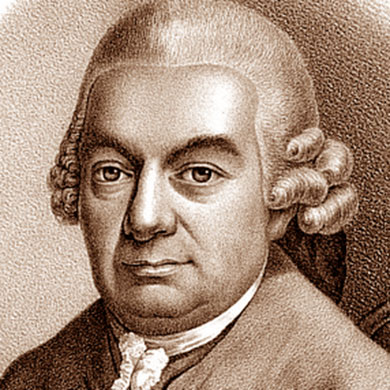 Baroque music went out of vogue but any composer of genius in the new “classical” style was yet to emerge. Emanuel’s older brother, Wilhelm Friedemann, was active, and so were composers of the Mannheim school. And of course Christoph Willibald Gluck was writing operas in Paris. Still, the world had yet to wait for Haydn and Mozart to create real masterpieces. In the mean time, Emanuel became one of the most influential composers of the transitional period (he would be highly praised by Mozart and Beethoven). Emanuel was the fifth child of Johann Sebastian Bach and his first wife, Maria Barbara, but only the second to survive childhood. Georg Philipp Telemann was his godfather (thus the Philipp in his name). Emanuel was born in Weimar, but in 1723 the Bach family moved to Leipzig, were Johann Sebastian became the cantor at the famous St. Thomas church and school. That’s were Emanuel went to study (as did his elder brother, Friedemann). Later he attended the University of Leipzig, studying law. In 1738 he moved to Berlin were he obtained a position at the court of Crown Prince Frederick, the future king of Prussia, Frederick the Great. Emanuel stayed in his employ for thirty years. While in Berlin, he composed a large number of keyboard sonatas, several symphonies and other music. Berlin under Frederick became a center of arts and philosophy, and Emanuel acquired many friends, Gotthold Ephraim Lessing, Friedrich Gottlieb Klopstock and Moses Mendelssohn among them. Here’s a keyboard sonata in A Major, W55, no. 4. It was composed at the end of Emanuel’s stay in Berlin, in 1765. It’s easy to hear how this sonata could’ve influenced Haydn. The pianist is Marc-André Hamelin (recorded in concert, with some small mishaps in the otherwise impeccable and brilliant performance, quite unusual for the virtuoso Hamelin).
Baroque music went out of vogue but any composer of genius in the new “classical” style was yet to emerge. Emanuel’s older brother, Wilhelm Friedemann, was active, and so were composers of the Mannheim school. And of course Christoph Willibald Gluck was writing operas in Paris. Still, the world had yet to wait for Haydn and Mozart to create real masterpieces. In the mean time, Emanuel became one of the most influential composers of the transitional period (he would be highly praised by Mozart and Beethoven). Emanuel was the fifth child of Johann Sebastian Bach and his first wife, Maria Barbara, but only the second to survive childhood. Georg Philipp Telemann was his godfather (thus the Philipp in his name). Emanuel was born in Weimar, but in 1723 the Bach family moved to Leipzig, were Johann Sebastian became the cantor at the famous St. Thomas church and school. That’s were Emanuel went to study (as did his elder brother, Friedemann). Later he attended the University of Leipzig, studying law. In 1738 he moved to Berlin were he obtained a position at the court of Crown Prince Frederick, the future king of Prussia, Frederick the Great. Emanuel stayed in his employ for thirty years. While in Berlin, he composed a large number of keyboard sonatas, several symphonies and other music. Berlin under Frederick became a center of arts and philosophy, and Emanuel acquired many friends, Gotthold Ephraim Lessing, Friedrich Gottlieb Klopstock and Moses Mendelssohn among them. Here’s a keyboard sonata in A Major, W55, no. 4. It was composed at the end of Emanuel’s stay in Berlin, in 1765. It’s easy to hear how this sonata could’ve influenced Haydn. The pianist is Marc-André Hamelin (recorded in concert, with some small mishaps in the otherwise impeccable and brilliant performance, quite unusual for the virtuoso Hamelin).
As long as we’re celebrating Emanuel Bach, we should also mark the birthday of his godfather, Georg Philipp Telemann, who was born on March 14th 1681. Telemann, a good friend of Johann Sebastian Bach and an acquaintance of George Frideric Handel, was four years older than both and at some point more famous. That would change drastically in the early 19th century when public opinion turned against Telemann, being inferior to Bach. That may be the case, but the change created some amusing misconceptions. For example, two major biographers of Bach, Philipp Spitta and Albert Schweitzer, would favorably compare a Bach cantata to those of Telemann, except that now we know that the “Bach” cantata was actually written by Telemann. Here’s a good example: the first two parts of Telemann’s Cantata Das ist je gewisslich wahr. For a long time it was attributed to Bach as his Cantata BWV 141. It is performed by the ensemble I Febiarmonici, Wolfgang Helbich conducting.Permalink
March 3, 2014. Chopin, Smetana, Vivaldi. Just like last week, we’re running a bit late. We missed the birthday of Frédéric Chopin, who was born on March 1, 1810 (although that’s not definite – he may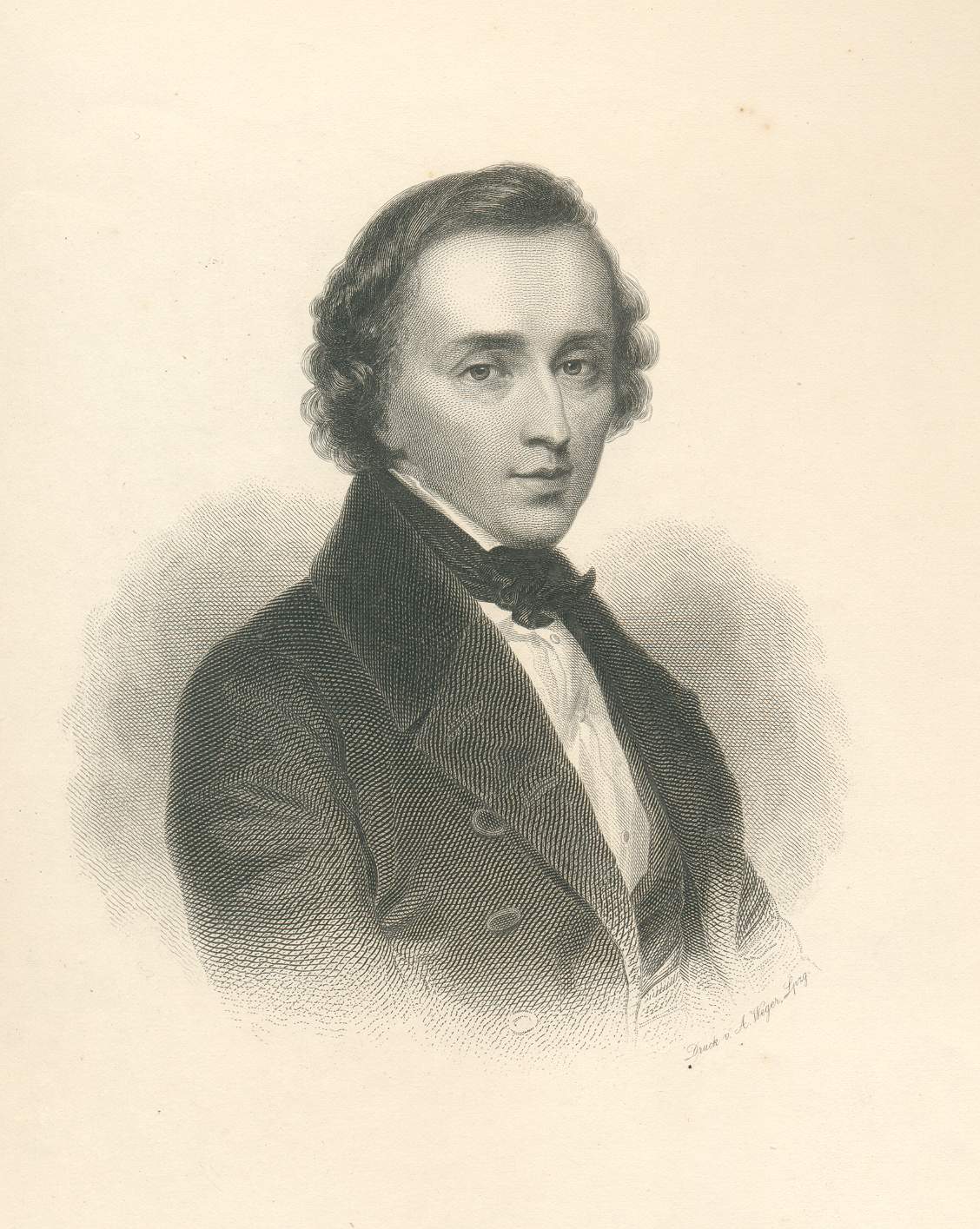 have been born on February 22nd of that year) and Bedřich Smetana, born March 2nd of 1824. Chopin was born in Żelazowa Wola, a small village about 20 miles west of Warsaw. He started composing at the age of 15 (his opus 1 was a piano Rondo in C minor). Two years later he wrote Variations on "Là ci darem la mano" from Mozart’s opera Don Giovanni (op. 2), the first and one of the very few pieces for piano and orchestra. Robert Schumann heard it in Leipzig four years later, and declared Chopin a genius. Chopin lived in Poland till September of 1831, when he left for Paris, as so many of his compatriots did after Russia repressed the Polish uprising of 1830-31. He hoped to return to Poland once the regime there had changed, but it never happened: Chopin was to live in France for the rest of his short life. In Paris he stayed close to the Polish émigré society (his French was never very good). Very soon he became famous both as a pianist and composer, met all the celebrities of the day and acquired a large number of well-paying students. One of the first compositions Chopin wrote in Paris was his opus 17 consisting of Four Mazurkas. Mazurka is a simple Polish folk dance, which in time was accepted on a ballroom floor, and Chopin’s exquisite piano pieces are just reminiscences of the originals. Here they are, performed by the great Arthur Rubinstein, no. 1, no. 2, no. 3, and probably the most popular in the set, no. 4. Rubinstein recorded these Mazurkas three times, in the 1930, 1950s and in 1965-66. These are the latest recordings.
have been born on February 22nd of that year) and Bedřich Smetana, born March 2nd of 1824. Chopin was born in Żelazowa Wola, a small village about 20 miles west of Warsaw. He started composing at the age of 15 (his opus 1 was a piano Rondo in C minor). Two years later he wrote Variations on "Là ci darem la mano" from Mozart’s opera Don Giovanni (op. 2), the first and one of the very few pieces for piano and orchestra. Robert Schumann heard it in Leipzig four years later, and declared Chopin a genius. Chopin lived in Poland till September of 1831, when he left for Paris, as so many of his compatriots did after Russia repressed the Polish uprising of 1830-31. He hoped to return to Poland once the regime there had changed, but it never happened: Chopin was to live in France for the rest of his short life. In Paris he stayed close to the Polish émigré society (his French was never very good). Very soon he became famous both as a pianist and composer, met all the celebrities of the day and acquired a large number of well-paying students. One of the first compositions Chopin wrote in Paris was his opus 17 consisting of Four Mazurkas. Mazurka is a simple Polish folk dance, which in time was accepted on a ballroom floor, and Chopin’s exquisite piano pieces are just reminiscences of the originals. Here they are, performed by the great Arthur Rubinstein, no. 1, no. 2, no. 3, and probably the most popular in the set, no. 4. Rubinstein recorded these Mazurkas three times, in the 1930, 1950s and in 1965-66. These are the latest recordings.
Bedřich Smetana, the first truly great Czech composer, was born in Litomyšl, a beautiful town of Gothic, Renaissance and Baroque buildings. By 1854-55 he was living in Prague and composing mostly for the piano. Then a series of personal tragedies befell him: in July of 1854 his second daughter died of tuberculosis. A year later his eldest daughter died of scarlet fever. Around that time he fourth daughter was born but she also died when she was just one year old. To make things worse, around the same time his wife was diagnosed with tuberculosis, of which she would die three years later. During that terrible period Smetana composed just a few pieces, one of them – a beautiful Piano Trio in G minor. He considered it a tribute to his eldest daughter Bedřiška. Here it is, performed by Carlota Amado, piano, Iason Keramidis, violin, and Vasily Bystroff, cello.
Antonio Vivaldi was born in Venice on March 4th, 1678. One of the most influential pieces in Vivaldi’s output was his L'Estro Armonico, op. 3, a collection of 12 concertos for one, two or four violins. The designation of "opus 3" is somewhat misleading: L'Estro Armonico was composed in 1711, and by then Vivaldi had composed dozens of concertos. L'Estro Armonico became very popular all over Europe, so much so that Johann Sebastian Bach reworked no less than six of these concertos: he arranged nos. 3, 9, and 12 for solo keyboard, 8 and 11 were turned into the organ concertos, and concerto number 10, originally for four violins was made into a concerto for four harpsichords, BWV 1065. Here is Vivladi’s original concerto, L'Estro Armonico, Op. 3, no. 10 in B minor for four violins, cello and strings. It is performed by the violinist Viktoria Mullova with the ensemble Il Giardino Armonico, Giovanni Antonini conducting.
PermalinkFebruary 24, 2014. Handel and Rossini. George Frideric Handel‘s birthday was yesterday (he was born on February 23rd, 1685). Since last week we wrote mostly about Corelli, we’ll mark Handel’s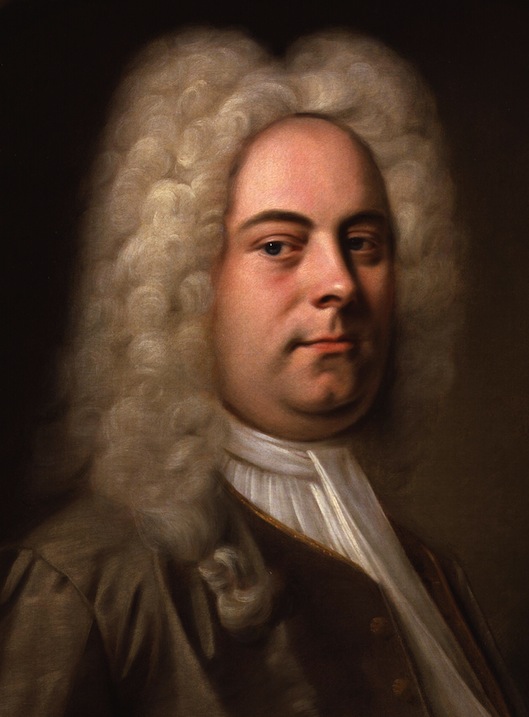 birthday a day late. There is a connection between Handel and Corelli. After spending his childhood in Halle, at the age of 21 Handel moved to Italy. There he was feted by the same patrons who some years earlier supported Corelli: cardinals Ottoboni and Pamphilii. And then of course there was a famous encounter years later in London. Corelli was known to have a quirk: he refused to play any note higher than high D on the E string. He felt that that was as high as music should go. None of his violin pieces, and there are a few, have any notes higher than D. Everybody knew this, including Handel. During one concert Corelli was supposed to play on sight a violin sonata by Handel. Just to spite his competitor, Handel inserted a high E in the score. Corelli played the sonata beautifully up to that point, saw the note, stopped and walked off the stage. A rather sad story of a rigid old master and an unkind, if supremely talented, challenger.
birthday a day late. There is a connection between Handel and Corelli. After spending his childhood in Halle, at the age of 21 Handel moved to Italy. There he was feted by the same patrons who some years earlier supported Corelli: cardinals Ottoboni and Pamphilii. And then of course there was a famous encounter years later in London. Corelli was known to have a quirk: he refused to play any note higher than high D on the E string. He felt that that was as high as music should go. None of his violin pieces, and there are a few, have any notes higher than D. Everybody knew this, including Handel. During one concert Corelli was supposed to play on sight a violin sonata by Handel. Just to spite his competitor, Handel inserted a high E in the score. Corelli played the sonata beautifully up to that point, saw the note, stopped and walked off the stage. A rather sad story of a rigid old master and an unkind, if supremely talented, challenger.
Handel is rightly famous for his operas, oratorios, and organ concertos and concerti grossi. He also wrote a number of keyboard suites. The keyboard suite no. 7 in G minor, in six parts, was composed around 1720. Handel had just recently founded an opera company, Royal Academy of Music; it was funded by a group of English aristocrats, and Handel assumed the position of Master of the Orchestra. He would write several masterpieces for the opera company, for example, Giulio Cesare and Ottone. Extremely productive, he also found time to write this grand keyboard piece (here). The pianist is the 24-year-old Andrei Gavrilov. In 1979 he accompanied Sviatoslav Richter to Tours, France, where Richter had established a music festival. There each of them performed several of Handel’s keyboard suites, turning score pages while the other played (just to remind you: Gavrilov had won the Tchaikovsky Competition five years earlier but was otherwise relatively unknown. Richter, world-famous, was 40 years his senior).
Gioachino Rossini was also born this week, on February 29th, 1792 in Pesaro. His mother was a singer and his father – a horn player (Rossini himself would eventually learn to play the horn). When he was eight, he was brought to Bologna where he received his initial musical education. He later went to the Conservatory of Bologna to study cello. There he fell in love with the music of Mozart. He wrote his first opera, La cambiale di matrimonio (The Marriage Contract) at the age of 18. His most famous opera, Il barbiere di Siviglia (The Barber of Seville), was written in 1816 when Rossini was only 24. Later in his life Rossini claimed that he wrote Il Barbiere in 12 days. The researchers think that it actually took him two or three weeks, still an astonishing feat. The first performance took place in the Teatro Argentina in Rome and was not successful: fans of Giovanni Paisiello's opera on the same subject practically sabotaged the premier. The second performance was successful, and the opera has never left the world stage since then. Right now, for example, it is being performed at the Lyric Opera in Chicago, with the young American baritone Nathan Gunn as Figaro. Probably the most famous aria of the opera, which is filled with tunes that have became familiar to millions, is the very first one, sung as Figaro enters the stage. Called Largo al Factotum (Make way to the factotum, a servant responsible for many tasks), it is not only technically difficult, but is being performed while the singer’s voice is not completely warmed up. Here’s the great Tito Gobbi in a 1957 recording.Permalink